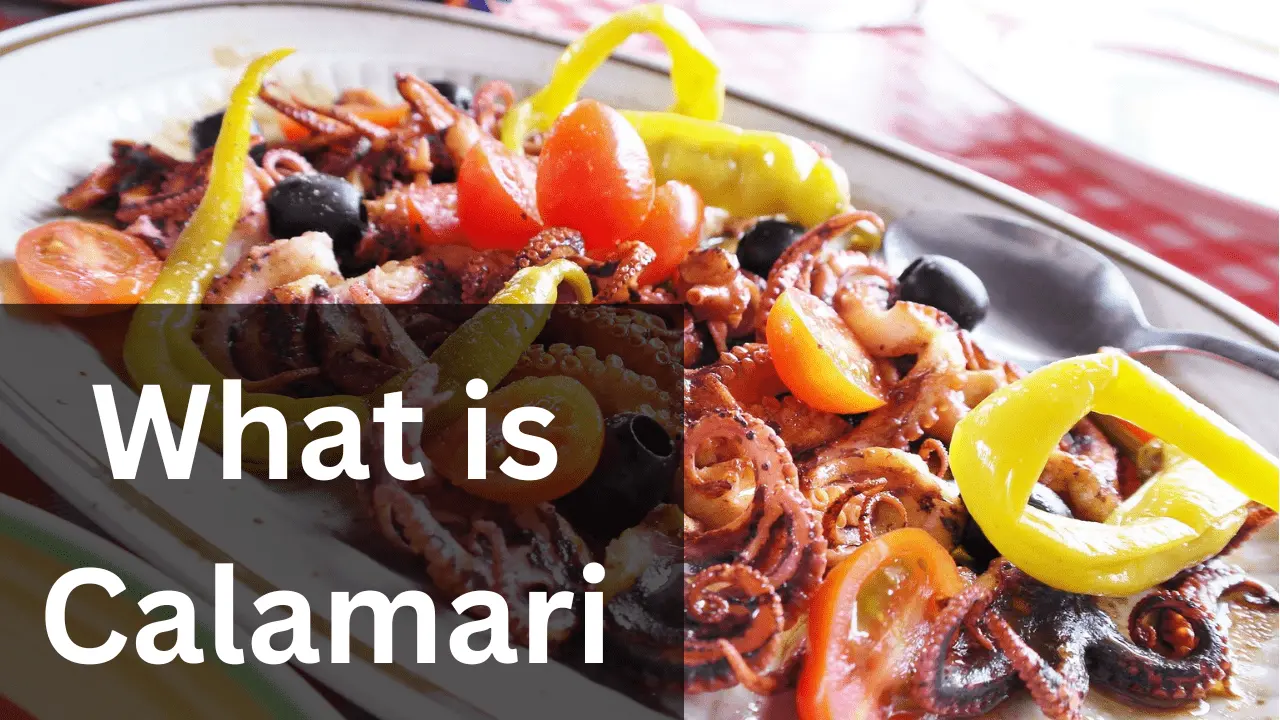Calamari, a beloved delicacy enjoyed around the world, offers a tantalizing blend of flavors and textures. Delving into its origins and exploring its diverse varieties provides insights into its culinary significance and cultural relevance.
Origins and Culinary History:
Calamari, derived from the Italian word for “squid,” has a history deeply intertwined with Mediterranean and Asian cuisines. Squid, a cephalopod mollusk, has been a staple in coastal regions for centuries. Ancient Mediterranean cultures, such as those in Greece, Italy, and Spain, incorporated squid into their diets, often showcasing its versatility through grilling, frying, and marinating techniques. In Asian cultures, squid has been enjoyed in dishes like Japanese sashimi, Korean stir-fries, and Thai curries.
Varieties of Calamari:
Calamari encompasses various culinary preparations, each offering a distinct experience:
- Fried Calamari: One of the most popular forms, fried calamari features tender rings or tentacles coated in a seasoned batter and deep-fried to a crispy golden brown. Served with dipping sauces, it’s a delightful appetizer enjoyed in many cuisines.
- Grilled or Charred: Grilling or charring calamari brings out its natural flavors and imparts a smoky note. Often marinated in herbs, citrus, and olive oil, this preparation highlights the squid’s tender texture.
- Stuffed Calamari: Squid tubes can be stuffed with flavorful mixtures of rice, herbs, vegetables, and spices. This dish is often braised or simmered in tomato-based sauces for a satisfying and hearty meal.
- Asian Preparations: Asian cuisines offer unique takes on calamari. In Japanese cuisine, sashimi-style squid is thinly sliced and served with soy sauce and wasabi. In Korean cuisine, squid is a common ingredient in spicy stir-fries and stews.
- Ceviche: In Latin American countries, squid is often included in ceviche, a dish where seafood is “cooked” in citrus juices, creating a refreshing and tangy appetizer.
- Squid Ink Dishes: Squid ink, a distinctive ingredient, adds depth and richness to dishes like squid ink pasta and risotto. The ink’s deep color contrasts beautifully with other ingredients.
- Street Food: In coastal areas, grilled or skewered calamari is enjoyed as a popular street food, often seasoned with local spices and herbs.
The Distinctive Taste of Calamari: Flavor Profile Explored
Calamari, with its intriguing blend of flavors, offers a culinary experience that is both unique and delightful. Exploring its flavor profile allows us to appreciate the nuances that make calamari a beloved delicacy worldwide.
- Mild and Briny: The flavor of calamari is inherently mild and clean, reminiscent of the sea from which it comes. Its subtle brininess evokes the ocean’s essence, making it an ideal canvas for absorbing various seasonings and sauces.
- Tender Texture: Calamari’s tenderness contributes to its distinctive taste. When prepared well, the squid becomes tender, allowing it to melt in your mouth with a slight resistance that signifies its freshness.
- Subtle Sweetness: Calamari exhibits a subtle sweetness that balances its brininess. This natural sweetness is more pronounced in the body of the squid and contrasts beautifully with tangy or savory accompaniments.
- Absorptive Quality: Calamari’s relatively neutral flavor profile allows it to readily absorb the flavors of marinades, seasonings, and sauces, making it a versatile ingredient that adapts well to various cuisines and preparations.
Cooking Methods Influence Taste:
The method of cooking significantly impacts the flavor of calamari:
- Fried Calamari: The crispy exterior of fried calamari provides a satisfying contrast to the tender interior. The batter can be seasoned to add an additional layer of flavor.
- Grilled Calamari: Grilling imparts a smoky, charred note that complements the squid’s natural taste. Marinating before grilling infuses the calamari with a harmonious blend of flavors.
- Stewed or Braised: In dishes like stuffed calamari or seafood stews, calamari absorbs the flavors of the surrounding ingredients, resulting in a rich and well-rounded taste.
- Ceviche: In ceviche, the calamari’s sweetness is highlighted by the tangy citrus juices, creating a balanced and refreshing flavor.
- Squid Ink Dishes: Squid ink dishes, like pasta or risotto, offer a unique and bold flavor profile, with hints of the ocean combined with an earthy richness.
Calamari Across Cultures: Culinary Delicacies and Traditions
Calamari, a true global culinary treasure, transcends geographical boundaries to find its place in the heart of diverse cultures. Across continents and oceans, the preparation and consumption of calamari reflect unique traditions and culinary creativity, offering a glimpse into the rich tapestry of gastronomic heritage.
- Mediterranean Marvels: In Mediterranean countries like Greece, Italy, and Spain, calamari holds a cherished position on tables by the sea. These regions celebrate calamari through simple yet flavorful preparations, such as grilled squid drizzled with olive oil and adorned with herbs. Crispy fried calamari, often served with lemon wedges and aioli, is a popular appetizer that captures the essence of coastal living.
- Asian Inspirations: Calamari’s journey in Asia spans a diverse array of dishes. In Japan, thinly sliced raw squid, or “ika sashimi,” is savored alongside soy sauce and wasabi. Korean cuisine offers spicy stir-fried squid and squid ink dishes, while Thai cuisine features squid in aromatic curries and salads. Calamari becomes a canvas for culinary artistry in these cultures, each dish telling a story of tradition and innovation.
- Latin American Delights: Latin American countries bring their own flair to calamari with ceviche, a dish that showcases the freshest seafood marinated in citrus juices, often enhanced with chili peppers and herbs. From Mexico to Peru, the tangy and refreshing flavors of calamari ceviche reflect the vibrancy of Latin American cuisine.
- European Elegance: Calamari’s journey continues in European kitchens. In France, squid finds its way into dishes like “calamars à la provençale,” where it is stewed with tomatoes and aromatic herbs. Spanish cuisine highlights “chipirones,” small squid often stuffed and grilled to perfection. In Portugal, “lulas grelhadas” features grilled squid seasoned with garlic and olive oil.
- Cultural Significance: Calamari’s presence in various cultures reflects its significance beyond the plate. It embodies the connection between people and the sea, the history of coastal communities, and the adaptability of culinary traditions to changing times.
The Nutritional Value of Calamari: Health Benefits and Considerations
- Rich in Protein: Calamari is a quality source of protein, essential for tissue repair, muscle development, and overall body function. Protein supports satiety, making it an excellent option for those looking to manage their weight.
- Low in Calories and Fat: Calamari is relatively low in calories and saturated fats compared to other protein sources like red meat. This makes it a heart-healthy choice that contributes to weight management and cardiovascular well-being.
- Omega-3 Fatty Acids: Certain species of squid contain omega-3 fatty acids, which are known for their anti-inflammatory properties and potential benefits for heart health, brain function, and reducing the risk of chronic diseases.
- Vitamins and Minerals: Calamari contains several vitamins and minerals, including vitamin B12, selenium, phosphorus, and zinc. Vitamin B12 is essential for nerve health and red blood cell formation, while minerals contribute to bone health and various physiological processes.
- Considerations: While calamari offers numerous nutritional benefits, there are a few considerations to keep in mind:
- Cholesterol Content: Calamari can contain cholesterol, which should be monitored for those with specific dietary restrictions or cholesterol-related health concerns.
- Frying Method: While fried calamari is a popular choice, the frying process can increase the calorie and fat content of the dish. Opting for grilled, baked, or sautéed preparations can be a healthier choice.
- Sodium Intake: Some preparations, especially fried calamari and processed calamari products, can be high in sodium. Individuals who need to limit their sodium intake should be mindful of their choices.
- Allergies: Calamari is a seafood product and may trigger allergic reactions in individuals with shellfish allergies. It’s important to be cautious if you have known seafood allergies.
Incorporating Calamari:
To maximize the nutritional benefits of calamari:
- Choose grilled, baked, or sautéed preparations over fried options.
- Pair calamari with nutrient-rich sides like vegetables and whole grains.
- Experiment with homemade marinades and seasonings to control sodium content.
- Enjoy calamari as part of a balanced diet that includes a variety of protein sources.
Tips for Buying and Storing Calamari
Buying Calamari:
- Freshness Signs: Look for calamari that appears shiny, moist, and free of off-putting odors. Fresh calamari should have a clean, ocean-like scent.
- Texture: The squid should have a firm and springy texture. Avoid squid that feels mushy or overly soft.
- Whole or Prepped: You can purchase whole calamari or prepped calamari (such as cleaned and cut rings or tubes). Choose based on your preference and intended use.
- Color: Fresh calamari should have a pale, white to light pink color. Avoid any squid that looks discolored or brownish.
- Frozen Options: If fresh calamari isn’t available, high-quality frozen calamari can be a good alternative. Ensure the packaging is sealed properly, and there are no signs of freezer burn.
Storing Calamari:
- Fresh Calamari:
- Use fresh calamari within a day or two of purchase for the best flavor and texture.
- Keep it in the coldest part of your refrigerator, ideally in a container or wrapped in plastic wrap to prevent cross-contamination.
- Frozen Calamari:
- If you buy frozen calamari, follow the storage instructions on the packaging. Generally, keep it in the freezer until you’re ready to use it.
- Frozen calamari can be stored for several months but should be used within the recommended timeframe for best quality.
- Avoid Cross-Contamination:
- Store calamari separately from other foods to prevent potential cross-contamination.
- If you’re storing fresh calamari in the fridge, place it on a plate or container to catch any liquids that may leak.
- Thawing Frozen Calamari:
- To thaw frozen calamari, place it in the refrigerator overnight or use the defrost function on your microwave.
- Avoid thawing at room temperature to prevent bacterial growth.
Conclusion:
In this culinary exploration of What is calamari, we’ve dived into the world of these delectable deep-sea delights. From their origins as tender squid to their transformation into crispy, flavorful dishes, we’ve uncovered everything you need to know about calamari.
Calamari isn’t just a meal; it’s a culinary adventure waiting to be explored. Whether you prefer it lightly battered and fried, grilled to perfection, or incorporated into your favorite seafood pasta, calamari offers a delightful taste of the ocean.
So, the next time you encounter calamari on a menu or at your local seafood market, you’ll have a deeper appreciation for this versatile cephalopod. Bon appétit and enjoy your calamari journey!
Frequently Asked Questions
Q1:How many calories in calamari?
Ans: Calamari has around 150-200 calories per 100 grams.
Q2:How to clean calamari?
Ans: Rinse under cold water and remove internal organs and beak before cooking.
Q3:Can you eat calamari raw?
Ans: Calamari can be eaten raw, but it is often cooked for safety reasons.
Q4:How long does it take to cook calamari?
Ans: Cook for 2-3 minutes per side until golden brown and tender.
Q5:Is calamari high in cholesterol?
Ans: Calamari is relatively low in cholesterol.




